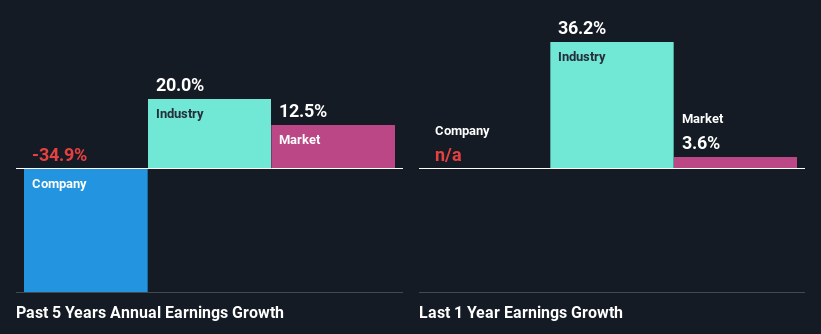Does The Market Have A Low Tolerance For Eversafe Rubber Berhad's (KLSE:ESAFE) Mixed Fundamentals?
Eversafe Rubber Berhad (KLSE:ESAFE) has had a rough three months with its share price down 8.5%. It is possible that the markets have ignored the company's differing financials and decided to lean-in to the negative sentiment. Long-term fundamentals are usually what drive market outcomes, so it's worth paying close attention. Specifically, we decided to study Eversafe Rubber Berhad's ROE in this article.
ROE or return on equity is a useful tool to assess how effectively a company can generate returns on the investment it received from its shareholders. Put another way, it reveals the company's success at turning shareholder investments into profits.
Check out our latest analysis for Eversafe Rubber Berhad
How Do You Calculate Return On Equity?
The formula for ROE is:
Return on Equity = Net Profit (from continuing operations) ÷ Shareholders' Equity
So, based on the above formula, the ROE for Eversafe Rubber Berhad is:
2.1% = RM1.2m ÷ RM60m (Based on the trailing twelve months to December 2023).
The 'return' refers to a company's earnings over the last year. That means that for every MYR1 worth of shareholders' equity, the company generated MYR0.02 in profit.
What Has ROE Got To Do With Earnings Growth?
So far, we've learned that ROE is a measure of a company's profitability. We now need to evaluate how much profit the company reinvests or "retains" for future growth which then gives us an idea about the growth potential of the company. Generally speaking, other things being equal, firms with a high return on equity and profit retention, have a higher growth rate than firms that don’t share these attributes.
A Side By Side comparison of Eversafe Rubber Berhad's Earnings Growth And 2.1% ROE
It is hard to argue that Eversafe Rubber Berhad's ROE is much good in and of itself. Even when compared to the industry average of 6.6%, the ROE figure is pretty disappointing. Therefore, it might not be wrong to say that the five year net income decline of 35% seen by Eversafe Rubber Berhad was possibly a result of it having a lower ROE. We reckon that there could also be other factors at play here. Such as - low earnings retention or poor allocation of capital.
However, when we compared Eversafe Rubber Berhad's growth with the industry we found that while the company's earnings have been shrinking, the industry has seen an earnings growth of 20% in the same period. This is quite worrisome.
Earnings growth is a huge factor in stock valuation. It’s important for an investor to know whether the market has priced in the company's expected earnings growth (or decline). By doing so, they will have an idea if the stock is headed into clear blue waters or if swampy waters await. One good indicator of expected earnings growth is the P/E ratio which determines the price the market is willing to pay for a stock based on its earnings prospects. So, you may want to check if Eversafe Rubber Berhad is trading on a high P/E or a low P/E, relative to its industry.
Is Eversafe Rubber Berhad Using Its Retained Earnings Effectively?
Because Eversafe Rubber Berhad doesn't pay any regular dividends, we infer that it is retaining all of its profits, which is rather perplexing when you consider the fact that there is no earnings growth to show for it. So there could be some other explanations in that regard. For instance, the company's business may be deteriorating.
Summary
In total, we're a bit ambivalent about Eversafe Rubber Berhad's performance. Even though it appears to be retaining most of its profits, given the low ROE, investors may not be benefitting from all that reinvestment after all. The low earnings growth suggests our theory correct. Wrapping up, we would proceed with caution with this company and one way of doing that would be to look at the risk profile of the business. To know the 3 risks we have identified for Eversafe Rubber Berhad visit our risks dashboard for free.
Have feedback on this article? Concerned about the content? Get in touch with us directly. Alternatively, email editorial-team (at) simplywallst.com.
This article by Simply Wall St is general in nature. We provide commentary based on historical data and analyst forecasts only using an unbiased methodology and our articles are not intended to be financial advice. It does not constitute a recommendation to buy or sell any stock, and does not take account of your objectives, or your financial situation. We aim to bring you long-term focused analysis driven by fundamental data. Note that our analysis may not factor in the latest price-sensitive company announcements or qualitative material. Simply Wall St has no position in any stocks mentioned.

 Yahoo Finance
Yahoo Finance 
